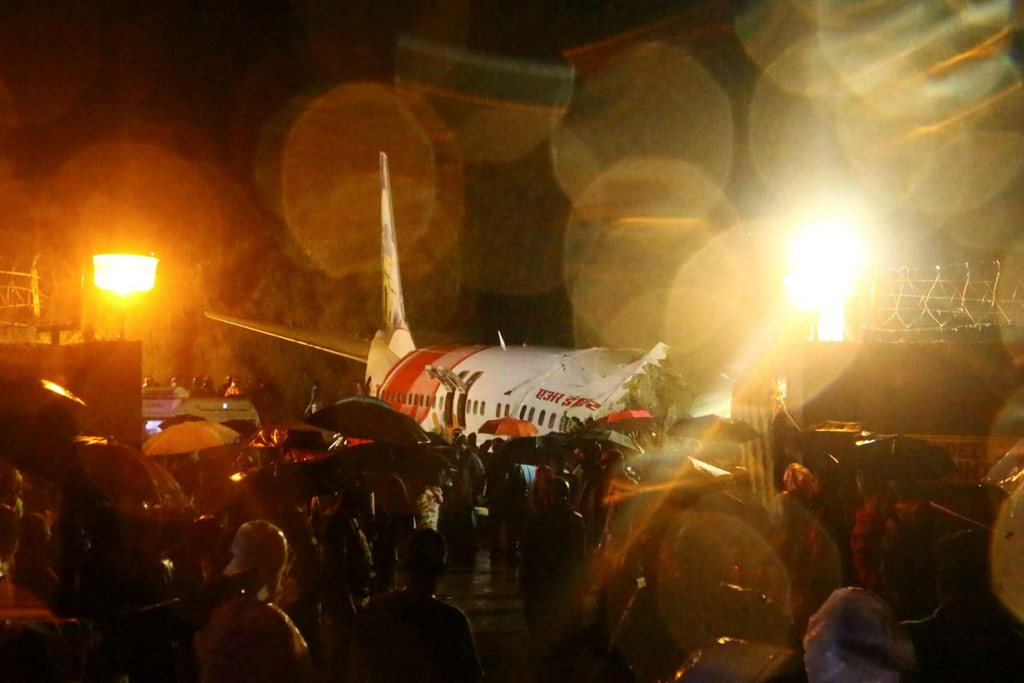
Air India not equipped to handle emergency, finds probe panel

A recent probe report on the Air India Express plane crash at Kozhikode on August 7 last year clearly indicates that years of neglect and mismanagement have left national flag carrier Air India in a state of complete disorder.
Air India Express, headquartered in Kochi, is a wholly-owned subsidiary of loss-making Air India.
A Civil Aviation Ministry-appointed probe panel has pointed out that failure to adhere to standard operating procedures and “systemic failure” were the probable reasons behind the crash of the Air India Express aircraft, that left 21 people dead, including the pilots.
The plane, a B737-800 VT-AXH, was operating a quick return flight on the Kozhikode-Dubai-Kozhikode sector under Vande Bharat Mission to repatriate passengers who were stranded overseas owing to the COVID pandemic, when the mishap took place.
The probe panel led by Capt. Surender Singh Chahar has made several observations in its report which indicate that India’s oldest airline is not equipped to handle any emergency situation nor has equipment in readiness in case of any accident.
The committee notes:
- On scrutiny of documents, it was observed that on occasions, an unsafe practice of not recording defects in the technical log/PDR and communicating the same through verbal reporting was being followed in the company, especially at outstations, without giving due consideration to safety or procedure.
- The primary duty of the Tower Met Officer (TMO) is to continuously observe and report in real-time the meteorological parameters affecting landing and take-off at the aerodrome. The TMO briefs about the development of adverse weather situations and issues appropriate reports/warnings. However, it was revealed that the TMO was not present at the ATC Tower of Kozhikode airport at the time of the accident.
- During the investigation, it was found that the hand-held master wind speed measuring equipment used for calibration of the anemometer was not calibrated as per the prescribed calibration schedule. There were no records of its maintenance schedule. Further, as per the records made available by the Met Office, it was observed that the wind instrument at runway 10 often remained unserviceable for prolonged periods, particularly since December 2019, and was under NOTAM (notification to airmen) intermittently.
- According to the statement of the Airport Duty Doctor, on the day of the accident, medical cover during an accident was to be provided by the APHO (airport health officer) and he did not have any specific role to play at the accident site. He is stated to have received information regarding the aircraft crash from his hospital colleagues and not through the channel prescribed in the AEP (Airport Emergency Plan). In another statement, submitted at a later date, in response to questions from the investigation team, the Airport Doctor changed his version and claimed that all actions were undertaken as per the published AEP. This is in total variance with the initial deposition and written statements submitted by the Airport Doctor.
- During the visit of the investigation team to Kozhikode, the Head of Fire Department gave a written statement and deposed before the team that no familiarisation training for ARF (Airport Rescue & Fighting Services) personnel on aircraft operating at Kozhikode airport has been carried out. The same was also confirmed by other fire crew members. However, lately, records of Aircraft Familiarisation Training were provided to the investigation team to state that training was being regularly conducted over the years. This is contrary to the proof given by the Head of Fire Department and the deposition and written statements of the Head of Fire Department and other fire crew.
- The unavailability of a sufficient number of Captains at Kozhikode was the result of faulty AIXL (Air India Express Ltd) HR policy, which does not take into account operational requirements while assigning a permanent base to its Captains. There was only one Captain against 26 First Officers on the posted strength at Kozhikode.
- Poor CRM (Crew Resource Management) was a major contributory factor in this crash. As a consequence of the lack of assertiveness and the steep authority gradient in the cockpit, the First Officer did not take over the controls in spite of being well aware of the grave situation. The lack of effective CRM training of AIXL resulted in poor CRM and a steep cockpit gradient.
The above observations show that while the new owner of Air India might end up getting the full fleet of 173 aircraft of various combinations of Airbus and Boeing – and 800 international landing and parking slots at domestic airports, 900 at foreign destinations and membership of the Star Alliance – that won’t be good enough as the airline suffers from systemic issues.
The Indian government is set to select the successful bidder for the airline in the next few weeks, as it sells off its 100 per cent stake in Air India which has accumulated losses of ₹70,820 crore till March 31, 2020. Final bids for acquiring the airline were recently submitted by Tata Sons and SpiceJet promoter Ajay Singh.
But what Air India urgently needs is a complete overhaul of internal checks and balances before the winning bidder restarts its operations. Else, in the event of another mishap, the entire business of the new owners would get crippled.
Also read: Kozhikode crash: Easy to speculate on cause, but that may not be fair


